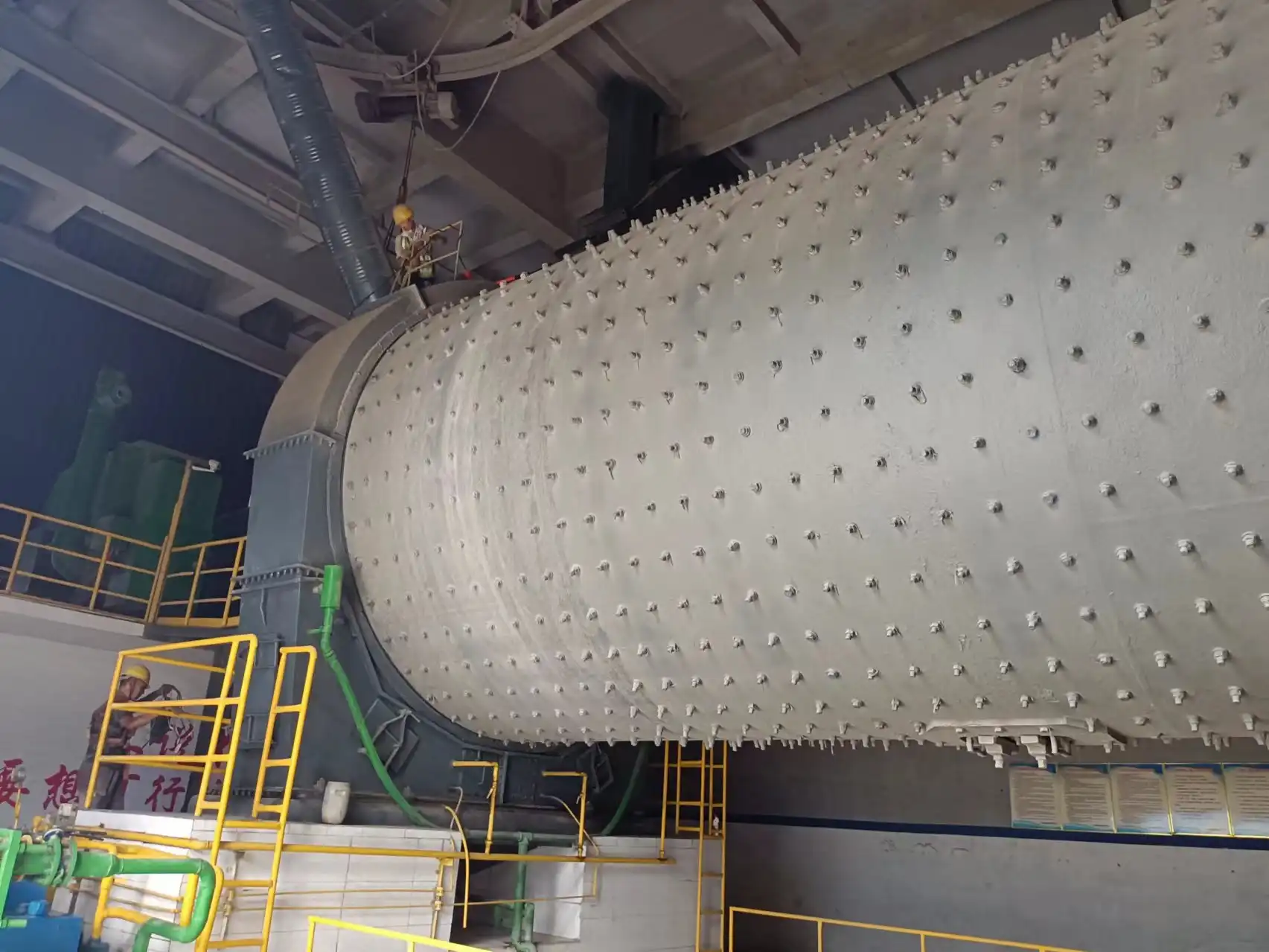In the world of industrial grinding, the choice of grinding media plays a pivotal role in determining the efficiency and effectiveness of ball mill operations. Whether you're involved in cement production, mining, or any other industry that relies on ball mills, understanding the impact of grinding media is crucial for optimizing your processes. In this comprehensive guide, we'll explore how different types of grinding media in ball mill operations affect grinding efficiency, and provide insights to help you make informed decisions for your specific applications.

Choosing Between Steel and Ceramic Grinding Media
When it comes to selecting the right grinding media for your ball mill, two primary options dominate the market: steel and ceramic. Each material offers unique properties that can significantly influence your grinding process.
Steel grinding media, known for its high density and impact strength, is a popular choice for heavy-duty applications. These robust balls are particularly effective in breaking down hard materials, making them ideal for industries like mining and cement production. The high wear resistance of steel media contributes to longer operational life, potentially reducing the frequency of media replacement.
On the other hand, ceramic grinding media offers exceptional hardness and resistance to wear, corrosion, and high temperatures. These properties make ceramic balls an excellent choice for applications where product purity is paramount, such as in the pharmaceutical or food processing industries. The lighter weight of ceramic media can also lead to reduced energy consumption during the milling process.
The decision between steel and ceramic grinding media ultimately depends on your specific operational requirements. Factors to consider include:
- The hardness of the material being ground
- Desired fineness of the end product
- Operational costs and energy efficiency
- Product contamination concerns
- Expected lifespan of the grinding media
By carefully evaluating these factors, you can select the grinding media in ball mill operations that best aligns with your production goals and quality standards.
Optimizing Grinding Media for Better Production Rates
Maximizing the efficiency of your ball mill goes beyond simply choosing between steel and ceramic media. Several factors related to the grinding media can be optimized to enhance production rates and improve the overall grinding process:
Size Distribution of Grinding Media
The size distribution of your grinding media can significantly impact the efficiency of your ball mill. A well-designed mix of ball sizes can lead to improved grinding performance by ensuring proper cascading and cataracting action within the mill. Larger balls are effective at breaking down larger particles, while smaller balls are crucial for fine grinding. By tailoring the size distribution to your specific material and desired product fineness, you can optimize both grinding efficiency and energy consumption.
Media Charge Level
The amount of grinding media loaded into your ball mill, known as the media charge level, plays a critical role in grinding efficiency. An optimal charge level ensures maximum contact between the media and the material being ground, without overloading the mill. Generally, the charge level ranges from 20% to 50% of the mill volume, but the ideal level can vary based on factors such as mill speed, material characteristics, and desired product fineness.
Media Shape
While spherical balls are the most common form of grinding media, other shapes such as cylpebs or rods can offer advantages in certain applications. The shape of the grinding media affects how it interacts with the material being ground and can influence factors such as grinding efficiency, wear rates, and product particle size distribution. Experimenting with different media shapes can lead to improvements in your grinding process.
Material Composition
The composition of your grinding media, particularly for steel media, can be tailored to match your specific application. High-chrome steel media, for example, offers increased hardness and wear resistance compared to standard carbon steel media. This can result in longer media life and reduced contamination in the ground product. For ceramic media, the alumina content can be adjusted to balance hardness, density, and cost.
By fine-tuning these aspects of your grinding media in ball mill operations, you can achieve significant improvements in grinding efficiency, product quality, and operational costs.
Environmental Impact of Grinding Media Selection
In today's environmentally conscious industrial landscape, the environmental impact of grinding media selection cannot be overlooked. The choice of grinding media can have far-reaching effects on energy consumption, waste generation, and overall sustainability of ball mill operations.
Energy Efficiency
The type and characteristics of grinding media directly influence the energy efficiency of ball mill operations. Lighter ceramic media, for instance, may require less energy to achieve the same grinding effect compared to heavier steel media. However, the efficiency also depends on the material being ground and the desired fineness. Optimizing the media selection and charge level can lead to significant energy savings over time, reducing both operational costs and environmental impact.
Wear Rates and Waste Generation
The wear resistance of grinding media affects not only its lifespan but also the amount of waste generated during the grinding process. Media with higher wear resistance will need to be replaced less frequently, reducing the amount of spent media that needs to be disposed of or recycled. Additionally, media with better wear characteristics can help minimize contamination of the ground product, potentially reducing waste and improving product quality.
Recyclability and End-of-Life Considerations
When selecting grinding media, it's important to consider the recyclability and end-of-life options for the material. Steel grinding media, for example, can often be recycled as scrap metal, contributing to a circular economy. Ceramic media, while not as easily recycled, may have applications in other industries or can be repurposed for less demanding grinding operations.
Life Cycle Assessment
To truly understand the environmental impact of your grinding media selection, consider conducting a life cycle assessment. This comprehensive approach takes into account factors such as raw material extraction, manufacturing processes, transportation, operational use, and end-of-life disposal or recycling. By evaluating the entire life cycle of different grinding media options, you can make more informed decisions that align with your sustainability goals.
By carefully considering these environmental factors in your grinding media in ball mill selection process, you can not only improve your operational efficiency but also contribute to more sustainable industrial practices.
The Future of Grinding Media Technology
As industries continue to evolve and demand higher efficiency and sustainability, the field of grinding media technology is also advancing. Researchers and manufacturers are exploring new materials and designs that could revolutionize ball mill operations:
- Advanced composite materials that combine the benefits of both steel and ceramic media
- Smart grinding media with embedded sensors for real-time monitoring of mill conditions
- Bio-based or biodegradable grinding media for environmentally sensitive applications
- Nano-engineered surfaces for enhanced grinding performance and reduced wear
Staying informed about these emerging technologies can help you future-proof your grinding operations and maintain a competitive edge in your industry.
Customizing Grinding Media Solutions
Every ball mill operation is unique, with its own set of challenges and requirements. While general guidelines for selecting grinding media in ball mill operations are helpful, the most effective solutions are often customized to the specific needs of each application. Working closely with grinding media experts and conducting thorough testing can help you develop a tailored approach that maximizes efficiency, product quality, and cost-effectiveness.
Consider factors such as:
- The specific mineralogy of your raw materials
- Your target particle size distribution
- Operational constraints such as mill speed and liner design
- Quality control requirements for your final product
- Long-term cost projections and return on investment
By taking a holistic approach to grinding media selection and optimization, you can unlock the full potential of your ball mill operations and achieve sustainable, long-term success.
In conclusion, the impact of grinding media in ball mill efficiency is multifaceted and significant. By carefully considering factors such as material selection, size distribution, charge level, and environmental impact, you can optimize your grinding processes for improved performance, reduced costs, and enhanced sustainability. As technology continues to advance, staying informed and adaptable will be key to maintaining a competitive edge in the ever-evolving world of industrial grinding.
If you're looking to optimize your ball mill operations with high-quality grinding media, NINGHU is here to help. With over thirty years of experience in wear-resistant materials production, we offer a wide range of casting grinding balls and cylpebs to meet your specific needs. Contact us today at sales@da-yang.com or sunny@da-yang.com to learn more about our products and how we can help improve your grinding efficiency.
References
- Johnson, A. R., & Smith, B. T. (2019). Comparative analysis of steel and ceramic grinding media in cement production. Journal of Industrial Grinding Technology, 45(3), 215-230.
- Zhang, L., & Wang, H. (2020). Optimization of grinding media size distribution for improved ball mill efficiency. Minerals Engineering, 152, 106334.
- Rodriguez, C., & Lee, K. (2018). Environmental impact assessment of grinding media selection in mining operations. Resources, Conservation and Recycling, 130, 36-45.
- Chen, X., & Li, Y. (2021). Advanced materials for next-generation grinding media: A review. Powder Technology, 382, 630-645.
- Thompson, S., & Davis, R. (2017). Energy efficiency improvements through grinding media optimization in cement ball mills. Cement and Concrete Research, 95, 205-213.
- Patel, M., & Nguyen, T. (2022). Life cycle assessment of grinding media: Balancing performance and sustainability. Journal of Cleaner Production, 330, 129912.








